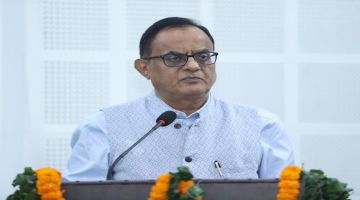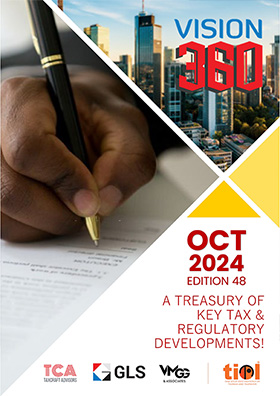Realising Goal for education by 2030 uphill task for all countries: OECD
By TIOL News Service
PARIS, SEPT 18, 2016: OECD countries must step up their efforts to improve the quality and equity of their education systems as part of their commitments to meet the Sustainable Development Goal (SDG) for education by 2030, according to a new OECD report.
Education at a Glance 2016 measures - for the first time - countries' efforts to achieve "inclusive and equitable quality education and promote lifelong learning opportunities for all”. Of the 35 OECD countries, only 12 with available data are meeting the benchmark level for at least five of the ten SDG targets for education, and just six of the 22 European Union countries with available data.
Australia and Canada are top performers, followed by the Netherlands and Belgium with data for all targets and benchmark level performance on at least seven out of the ten targets. But other countries face a huge challenge. Overall, the targets for quality of learning outcomes and skills of students and adults are proving most difficult.
Most countries have increased their investment in education in recent years: between 2008 and 2013, student numbers in schools fell by 1% as fewer children were born in the OECD area, but spending per student in real terms was 8% higher in 2013 than in 2008. Spending by students and households has also risen, notably in tertiary education where 30% of expenditure comes from private sources. Between 2008 and 2013, total private expenditure has increased by 14% across the OECD and by 12% in the EU22. While some countries have created funding mechanisms that give more students better opportunities to study, others levy fees that put educational opportunities out-of-reach of all but the wealthiest students.
Many young people have yet to see the benefit of increased spending: across OECD countries, about one in six 25-34 year-olds remains without an upper secondary education. The unemployment rate of young people without an upper secondary education is 17.4% on average (21.2% in the European Union), compared with only 6.9% (in the EU 8.0%) among those in that age group with a tertiary education.
Gender imbalances also persist. While more women than men are now tertiary graduates, women remain underrepresented in Science, Technology, Engineering and Mathematics. The transition from school to work is also more challenging for women. Across OECD countries, 18.5% of 20-24 year-old women are Neither Employed nor in Education or Training (NEETs), compared to 15.5% of men.
Immigrants tend to lag behind their native-born peers in educational attainment at all stages, making it more difficult to find a job after leaving education. Participation rates in pre-primary programmes - which are critical to the development of childrens' cognitive, emotional and social skills - are considerably lower for immigrant children. On average, 37% of 25-44year-olds with an immigrant background - but only 27% of 25-44 year-olds without an immigrant background - whose parents have not attained upper secondary education have not completed upper secondary education themselves. Students with an immigrant background are also much less likely to complete Bachelor's or equivalent tertiary programmes than native-born students.
The report also questions whether countries are getting the best return on their education investments. Popular pressure pushed governments to reduce class sizes in lower secondary education by 6% from 2005 to 2014, despite evidence from the OECD's PISA programme that high performing education systems systematically prioritise better teachers over smaller classes. Investments in reducing class size have consumed resources better spent on recruiting and rewarding high quality teachers: from 2005 to 2014, upper secondary teacher salaries increased on average by only 1% in real terms, and decreased in one-third of countries.
Education at a Glance 2016 provides comparable national statistics measuring the state of education worldwide. The report analyses the education systems of the 35 OECD member countries, as well as Argentina, Brazil, China, Colombia, Costa Rica, India, Indonesia, Lithuania, the Russian Federation, Saudi Arabia and South Africa.
Key findings
Educational attainment
++ The enrolment rate of 20-24 year-olds at the tertiary level increased from 29% to 33% between 2005 and 2014. 36% of today's young adults are expected to graduate before the age of 30, but only 41% of full-time bachelor students graduate within the theoretical duration. (A3)
++ Gender imbalances remain: although women are over-represented among tertiary graduates (57% of first-time graduates across OECD countries), they remain under-represented in certain fields of study, such as science and engineering while, in the field of education, four women graduated for every man in 2014. (A3)
++ The earnings premium compared with adults with upper secondary education is 91% for master's degree holders or higher, 48% for bachelor's holders and 20% for short-cycle tertiary education. (A6). But the private net return for a woman attaining tertiary education is about two-thirds than that for a man. (A7)
Education spending
++ OECD countries spend on average, USD 10,493 per student per year on primary through tertiary educational institutions: USD 8,477 per primary student, USD 9,980 per lower secondary student, USD 9,990 per upper secondary student and USD 15,772 per tertiary student. (B1)
++ Expenditure on tertiary education rose rapidly in most countries and was 29% higher in 2013 than in 2005, mainly due to a significant expansion of tertiary enrolment of 16% on average across the OECD. (B1)
++ OECD countries spent an average of 5.2% of their gross domestic product (GDP) in 2012 on educational institutions from primary to tertiary education, ranging from 3.5% in Luxembourg to 6.7% in the United Kingdom. (B2)
Access to education
++ Enrolments in pre-primary education rose from 54% of 3 year-olds in 2005 to 69% in 2014, and from 73% of 4 year-olds in 2005 to 85% in 2014 on average across OECD countries with 2005 and 2014 data. (C2)
++ 68% of young adults in OECD countries will enter tertiary education at least once during their lifetime if current patterns of entry continue. This average drops to 61% when international students are excluded and to 51% if only domestic students younger than 25 are considered. (C3)
++ Within the OECD, 6% of the students enrolled in tertiary education in 2014 were international students. The number of foreign tertiary students enrolled worldwide increased by 50% from 2005 to 2012. (C4)
In the classroom
++ Students in OECD countries receive an average of 7,540 hours of compulsory instruction during their primary and lower secondary education, ranging from 5,720 hours in Hungary to almost double that in Australia (11,000 hours) and Denmark (10,960 hours). (D1)
++ Ageing of the teaching workforce is a challenge in many countries: between 2005 and 2014 the share of teachers aged 50 or older grew in 16 of the 24 OECD countries with available data: 31% of primary school teachers were at least 50 years old in 2014, 34% at lower secondary level and 38% at upper secondary level. (D5)
++ More than two out of three teachers are women, on average across OECD countries, but the percentage of female teachers decreases as the level of education increases: 97% at pre-primary level, 82% at primary level, 68% at lower secondary level, 58% at upper secondary level and 43% at tertiary level. (D5)















